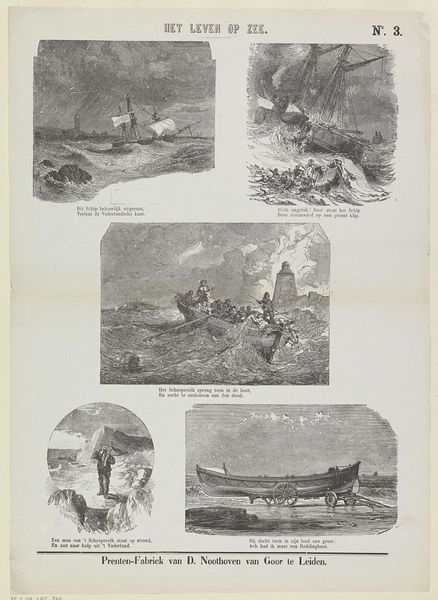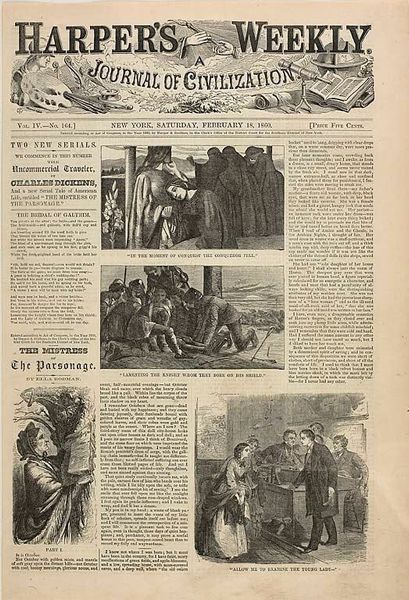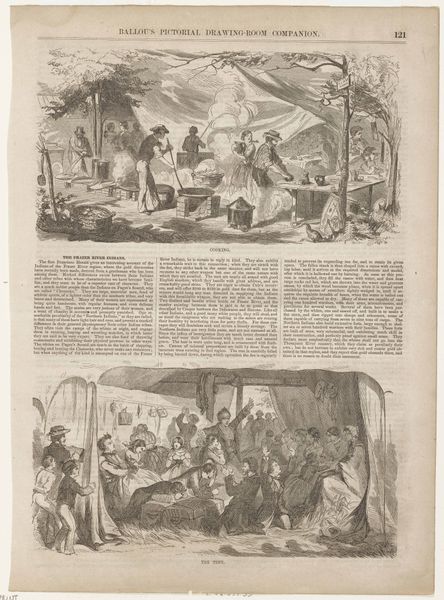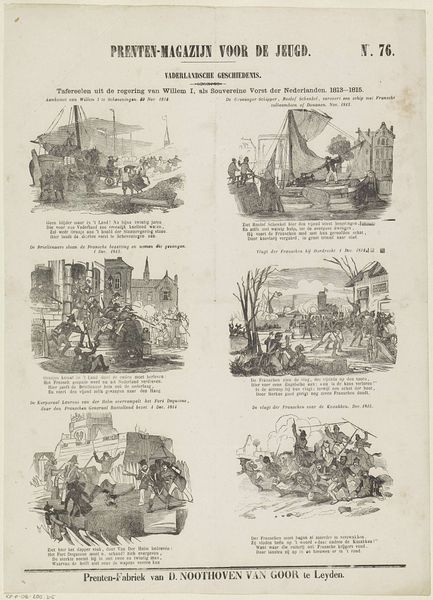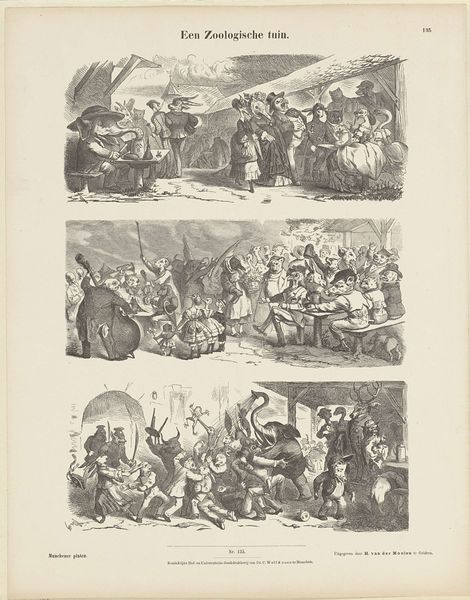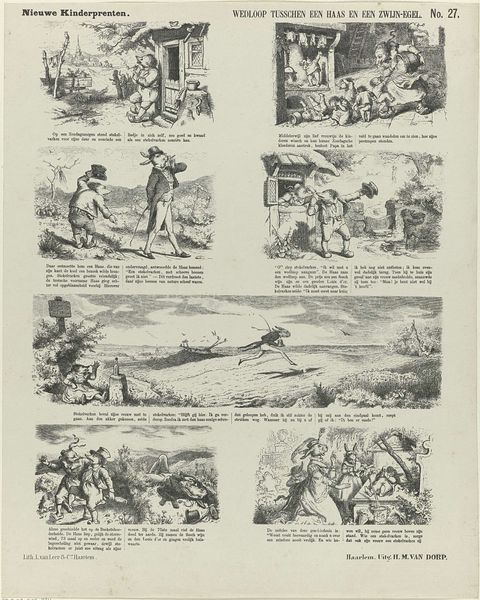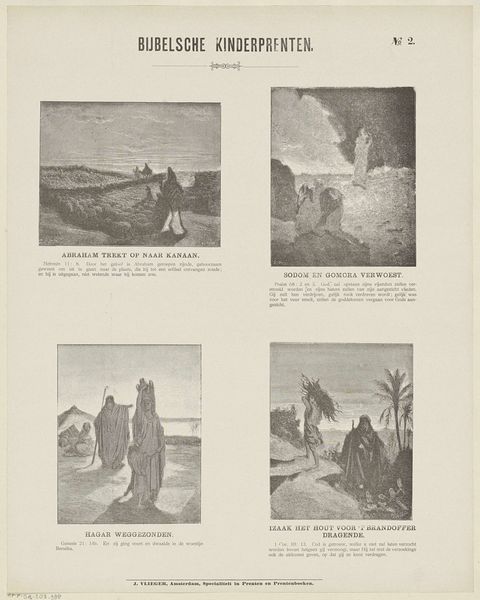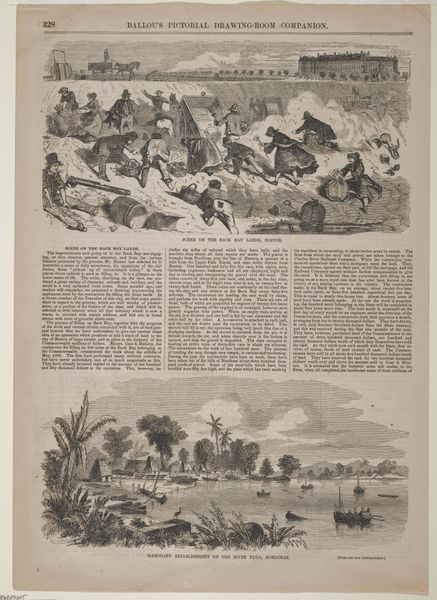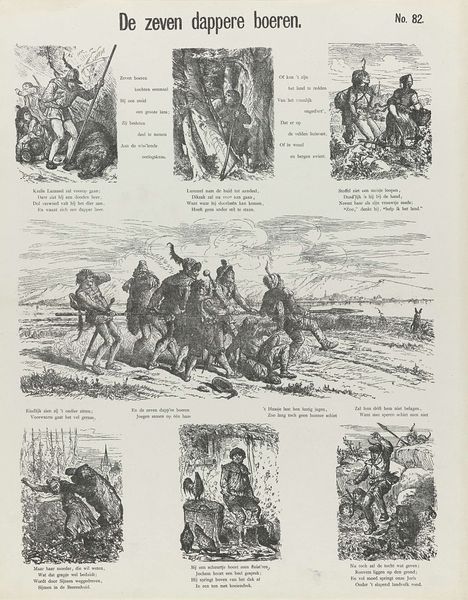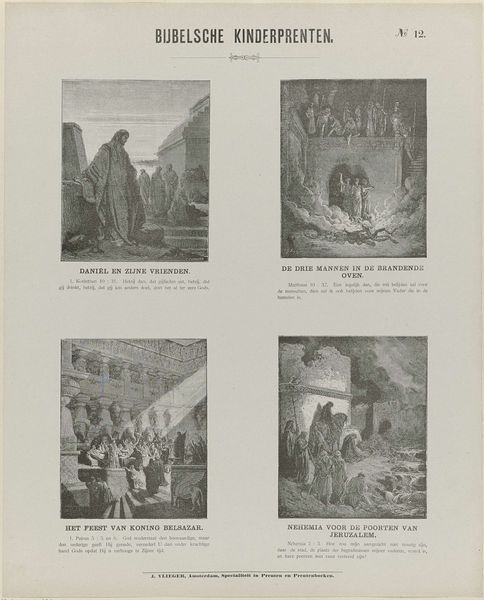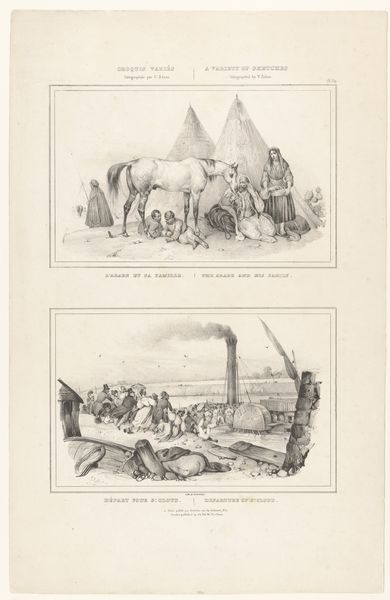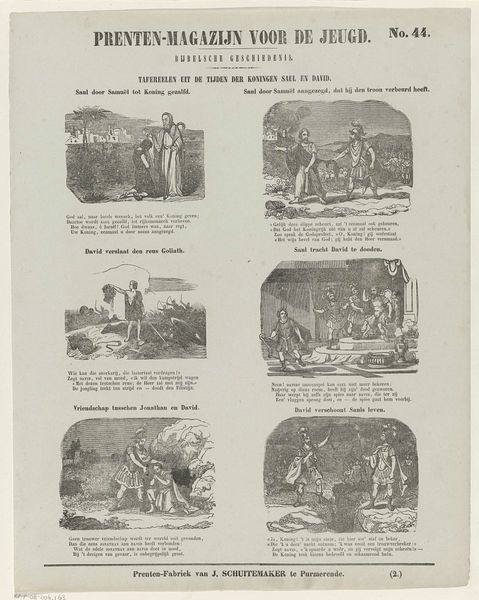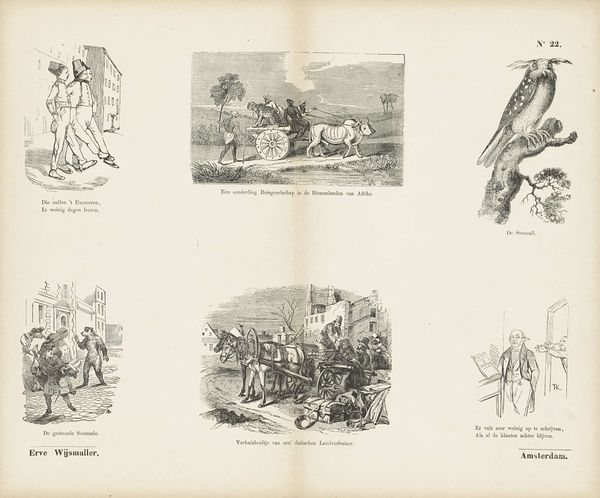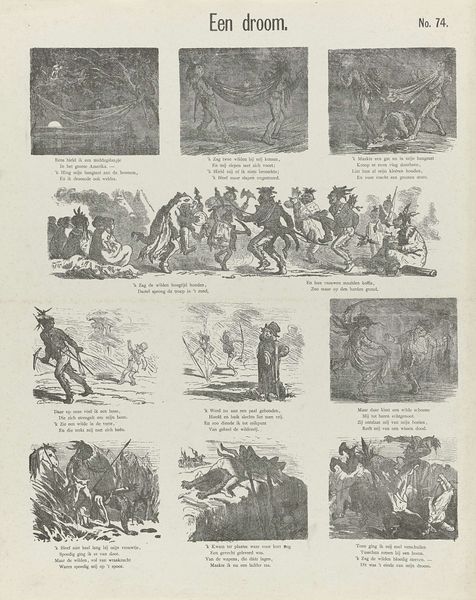
Pictures from the Lava Beds, from "The Last of the Modocs," Harper's Weekly 21 - 1873
0:00
0:00
print, photography
# print
#
photography
Dimensions: image/sheet: 38.74 × 26.99 cm (15 1/4 × 10 5/8 in.)
Copyright: National Gallery of Art: CC0 1.0
Editor: Here we have "Pictures from the Lava Beds, from "The Last of the Modocs," in Harper's Weekly" from 1873, attributed to Eadweard Muybridge. It looks like a photo-engraving or a woodcut of photographs documenting the Modoc War. There's a stark contrast between images of Modoc people and soldiers, which feels quite charged. What stands out to you? Curator: What immediately strikes me is how this composite image operates as a form of propaganda, circulated through a mass medium. Consider the production. Photography, here used seemingly objectively, is then filtered through the labor of wood engravers for dissemination. We have to ask, what’s being produced here beyond just an image? It’s clearly constructing a narrative for consumption, justifying westward expansion and depicting a specific view of the conflict. Who controlled the means of production? Editor: Right, the Harper's Weekly publication played a significant role in shaping public opinion. The woodcut medium seems to give it a sense of authenticity, like it’s raw documentation but… it is heavily mediated, right? It almost romanticizes a violent and painful moment. What do you make of the subjects themselves? Curator: We see images purportedly documenting Modoc warriors and families, and in stark contrast are the images of U.S. soldiers. Even the composition places them within a framework of "us" versus "them," reinforcing existing power structures and ideas of "civilization" versus "savagery". How does the availability and consumption of images like this normalize violence against marginalized groups? Think about how images operate in other contexts in that period. Editor: That’s such a great point. I hadn't thought about it that way. This definitely changes how I understand the purpose and reach of photojournalism, then and even now. Thanks for that perspective! Curator: Exactly, considering the production and consumption unpacks its political power. It shows us images aren't just documents, but products embedded in complex systems of labor, value, and control. I'm glad we could look at this together.
Comments
No comments
Be the first to comment and join the conversation on the ultimate creative platform.
